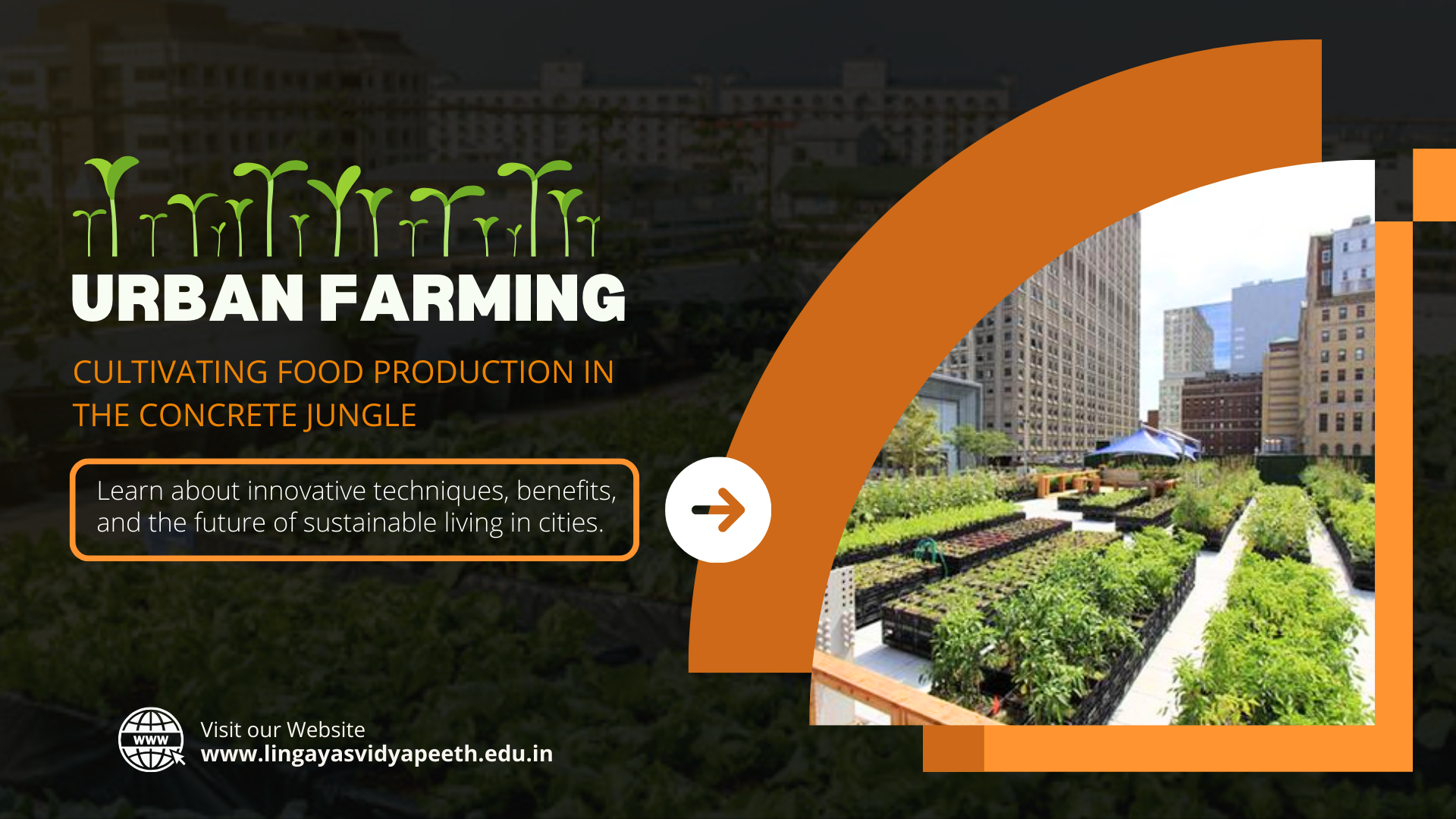Home » Urban Farming: Cultivating Food Production in the Concrete Jungle

Imagine a bustling city skyline, not just a landscape of concrete and glass, but dotted with vibrant patches of green. Rooftop gardens bursting with vegetables, balconies overflowing with herbs, and even abandoned warehouses transformed into vertical farms – this is the reality of urban agriculture, a movement that’s sprouting new life in cities worldwide.
Urban farming, also known as urban agriculture or urban gardening, encompasses a wide range of practices that involve growing, cultivating, and harvesting food within urban and peri-urban areas. From rooftop gardens and community plots to hydroponic systems and vertical farms, urban farming takes many forms, each tailored to the unique characteristics and constraints of urban environments.
Urban farming isn’t a monolithic concept. Here are some of the ways cities are cultivating a greener future:
Sustainable Farming Practices for a Greener Tomorrow
Urban farming offers a multitude of benefits for cities and their residents:
Despite its many benefits, urban farming also faces several challenges and considerations:
Help You Tackle Tomorrow’s Food Challenges
Conclusion-
Urban farming isn’t just a trend; it’s a movement with the potential to transform cities into greener, more resilient, and food-secure environments. By addressing challenges, fostering innovation, and engaging communities, we can cultivate a future where urban landscapes are not just places of concrete and steel, but vibrant hubs of food production and community connection.
Lingaya’s Vidyapeeth being one of the best agriculture colleges in Delhi NCR helps you to master future-focused AgTech, sustainability, & diverse specializations. Gain hands-on experience & network with industry leaders. Shape a food-secure future. Pursue MSc in agriculture at Lingaya’s Vidyapeeth to grow your potential, apply now!
From
Dr. Nand Ram
Ph.D. & Post Doctorate (Soil Science)
School of Agriculture
Lingaya’s Vidyapeeth
Best Colleges in Faridabad for M.Sc Agriculture
RECENT POSTS
CATEGORIES
TAGS
Agriculture Agriculture future AI Architecture artificial intelligence Bachelor of Commerce BA English BA Psychology BTech AIML BTech CSE BTech cybersecurity BTech Engineering Business management career Career-Specific Education career guide career option career scope Civil engineering commerce and management Computer Science Computer science engineering Data science degree education Engineering Engineering students English Literature english program Fashion Design Fashion design course Higher Education Journalism journalism and mass communication law Law career Machine Learning mathematics MBA MBA specialization Mechanical Engineering Pharmacy Psychology Research and Development students
Nachauli, Jasana Road, Faridabad, Haryana
Address: C-72, Second Floor, Shivalik, Near Malviya Nagar,
Above HDFC Bank, New Delhi 110017
Landline No. - 011-46570515 / 45138169 / 41755703
Mobile No. - +91-7303152412 / +91-7303152420 / +91-9311321952
Toll Free: 1800-120-4613
Mobile : 8447744303 | 8447744304 | 8447744306 | 8447744309
8700003974 | 8700003411 | 8700003749
Copyrights © 1998 - 2025 Lingaya's Vidyapeeth (Deemed To Be University). All rights reserved.
LV only conducts physical/online verification of any document related to examination on the following email id:
It is important to note that the following email IDs and domains are fraudulent and do not belong to our university.